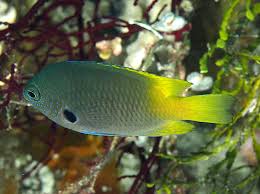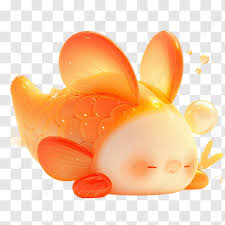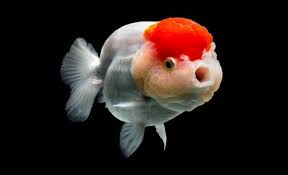Chinese fresh tea is an art and science, requiring careful attention to detail to unlock its true flavors and health benefits. Many tea enthusiasts, especially beginners, often make mistakes when brewing fresh tea, which can lead to bitterness, loss of aroma, or reduced nutritional value.
This article explores the most common mistakes when brewing Chinese fresh tea, their consequences, and how to correct them to achieve the perfect cup every time.
1. Using Poor-Quality or Stale Tea Leaves
Mistake:
One of the most fundamental errors is using low-quality, old, or improperly stored tea leaves. Freshness is crucial, as oxidized or aged leaves lose their aroma and beneficial compounds.
Consequences:
✔ Weak, flavorless tea.
✔ Loss of antioxidants and nutrients.
✔ Higher chances of stale, musty taste.
How to Fix It:
✔ Buy from reputable sources that offer freshly harvested tea.
✔ Store tea properly in airtight containers, away from moisture, light, and strong odors.
✔ Use tea within six months to one year for optimal freshness.
2. Using the Wrong Water Temperature
Mistake:
Different types of Chinese fresh tea require specific water temperatures. Many people make the mistake of using boiling water (100°C/212°F) for all teas, which can burn the leaves and cause excessive bitterness.
Consequences:
✔ Scorched tea leaves result in a bitter taste.
✔ Loss of delicate aromas, especially in green and white teas.
Correct Water Temperatures for Different Teas:
| Tea Type | Ideal Temperature |
|---|---|
| Green Tea (e.g., Longjing, Biluochun) | 75–85°C (167–185°F) |
| White Tea (e.g., Baihao Yinzhen, Shoumei) | 80–90°C (176–194°F) |
| Oolong Tea (e.g., Tieguanyin, Da Hong Pao) | 85–95°C (185–203°F) |
| Black Tea (e.g., Keemun, Dianhong) | 90–100°C (194–212°F) |
| Pu-erh Tea | 95–100°C (203–212°F) |
How to Fix It:
✔ Use a temperature-controlled kettle or let boiled water cool slightly before pouring.
✔ Adjust the temperature depending on the tea type and sensitivity.
3. Steeping for Too Long or Too Short
Mistake:
Many beginners either oversteep or understeep their tea. Steeping for too long extracts too many bitter tannins, while steeping too briefly doesn’t allow the full flavor to develop.
Consequences:
✔ Oversteeping – Creates a bitter, unpleasant taste.
✔ Understeeping – Results in weak, watery tea with no depth.
Recommended Steeping Times:
| Tea Type | First Steeping Time |
|---|---|
| Green Tea | 1–3 minutes |
| White Tea | 2–5 minutes |
| Oolong Tea | 3–5 minutes |
| Black Tea | 3–5 minutes |
| Pu-erh Tea | 3–6 minutes |
How to Fix It:
✔ Follow recommended steeping times and adjust based on taste.
✔ Use shorter steeping times for delicate teas (green/white) and longer for richer teas (oolong/pu-erh).
4. Using Too Much or Too Little Tea Leaves
Mistake:
✔ Using too many leaves makes tea overly strong and astringent.
✔ Using too few leaves results in weak, flavorless tea.
Ideal Tea Leaf-to-Water Ratio:
| Tea Type | Tea Leaves per 250ml Cup |
|---|---|
| Green Tea | 2–3 grams |
| White Tea | 3–5 grams |
| Oolong Tea | 5–7 grams |
| Black Tea | 4–6 grams |
| Pu-erh Tea | 5–7 grams |
How to Fix It:
✔ Use a digital tea scale to measure the correct amount.
✔ Adjust according to personal preference but avoid extreme variations.
5. Using Tap Water Instead of Filtered Water
Mistake:
The water quality greatly impacts the tea’s flavor. Tap water with chlorine, heavy minerals, or impurities can alter the tea’s natural taste.
Consequences:
✔ Hard water or chlorinated water results in flat, dull-tasting tea.
✔ Impurities interfere with the tea’s delicate aroma and texture.
How to Fix It:
✔ Use filtered, spring, or mineral water for brewing.
✔ Avoid distilled water, as it lacks minerals that enhance flavor.
6. Not Rinsing Certain Tea Leaves Before Brewing
Mistake:
For Pu-erh tea and some Oolong teas, not rinsing the leaves before steeping is a common mistake. These teas often contain dust or residual processing elements.
How to Fix It:
✔ Quickly rinse the leaves with hot water (3–5 seconds) before the first steep.
✔ Discard the rinse water and proceed with brewing as usual.
7. Using the Wrong Teapot or Brewing Method
Mistake:
✔ Using a Western teapot for delicate Chinese teas can result in poor flavor extraction.
✔ Not using a Gaiwan (covered bowl) or Yixing clay teapot for Oolong and Pu-erh teas can reduce complexity.
Correct Brewing Methods for Different Teas:
| Tea Type | Best Brewing Method |
|---|---|
| Green/White Tea | Glass cup, Gaiwan |
| Oolong Tea | Yixing clay teapot, Gaiwan |
| Black Tea | Porcelain teapot, Gaiwan |
| Pu-erh Tea | Yixing clay teapot, Gaiwan |
How to Fix It:
✔ Use a Gaiwan for delicate teas to control steeping time.
✔ Use a Yixing clay teapot for Oolong and Pu-erh to enhance flavors.
8. Adding Sugar, Honey, or Milk Unnecessarily
Mistake:
Many people add sugar, honey, or milk to Chinese fresh tea, but this can mask its natural taste and reduce its health benefits.
Consequences:
✔ Alters the original flavor profile.
✔ Reduces antioxidant absorption.
How to Fix It:
✔ Drink tea plain to appreciate its natural sweetness and complexity.
✔ If you must sweeten, use a small amount of raw honey after the tea has cooled slightly.
9. Using Pre-Packaged Tea Bags Instead of Loose Leaves
Mistake:
Tea bags often contain low-quality, broken leaves (dust and fannings) that lack depth and aroma.
How to Fix It:
✔ Always choose whole loose-leaf tea for a richer and more authentic experience.
✔ Use a fine-mesh strainer or Gaiwan for proper brewing.
10. Drinking Tea on an Empty Stomach
Mistake:
Drinking strong tea on an empty stomach, especially green or black tea, can cause gastric irritation, nausea, or dizziness.
How to Fix It:
✔ Drink tea after meals or with a light snack.
✔ Avoid very strong or highly concentrated tea early in the morning.
Conclusion
Brewing Chinese fresh tea is an art that requires precision, patience, and respect for traditional techniques. By avoiding these common mistakes, you can unlock the full potential of your tea, enjoying richer flavors, deeper aromas, and enhanced health benefits.
🍵 Master the craft, and every cup of Chinese tea will be a moment of pure enjoyment! 🍵










